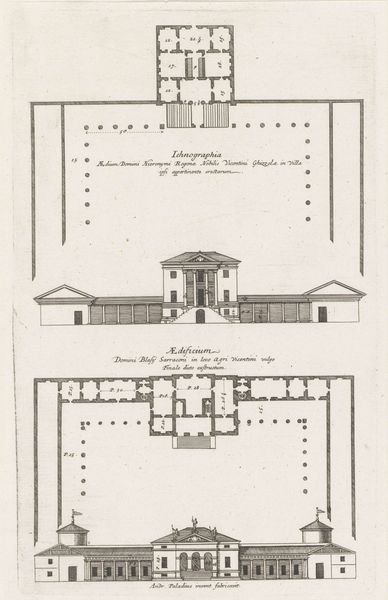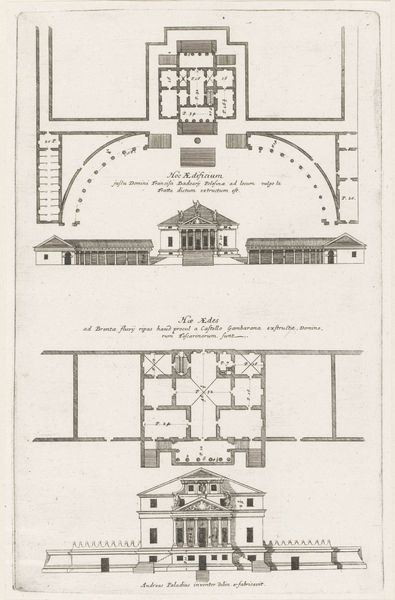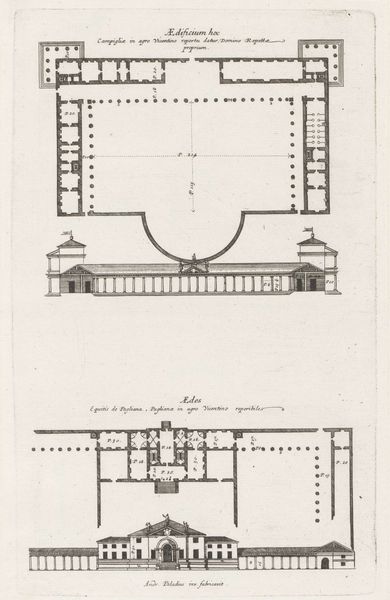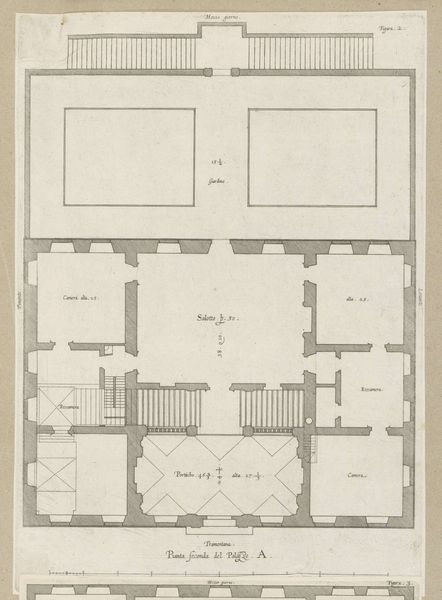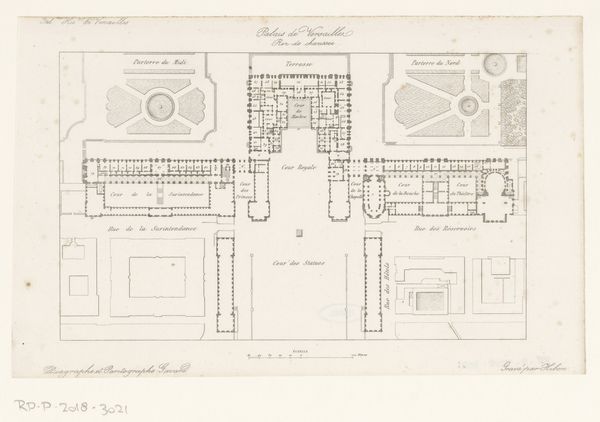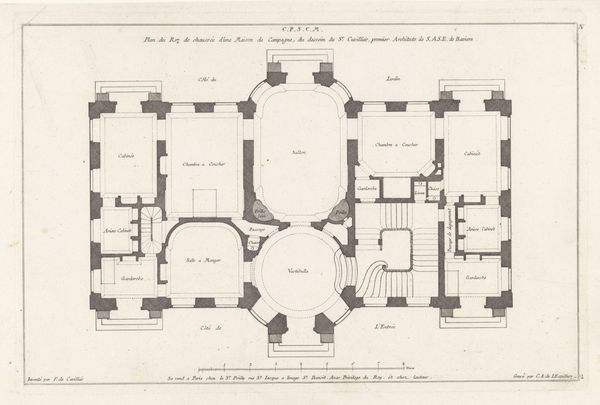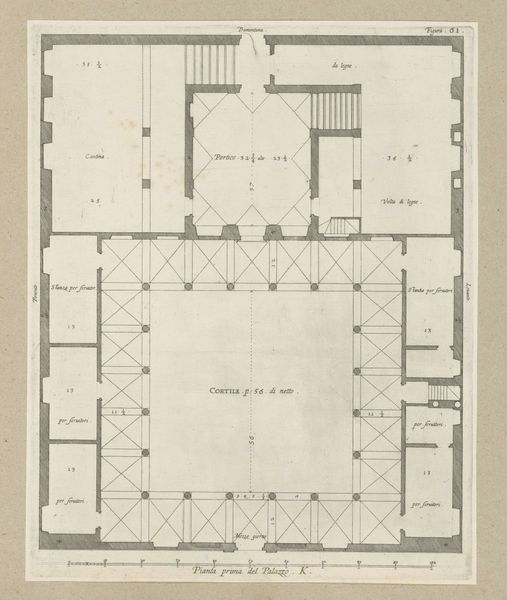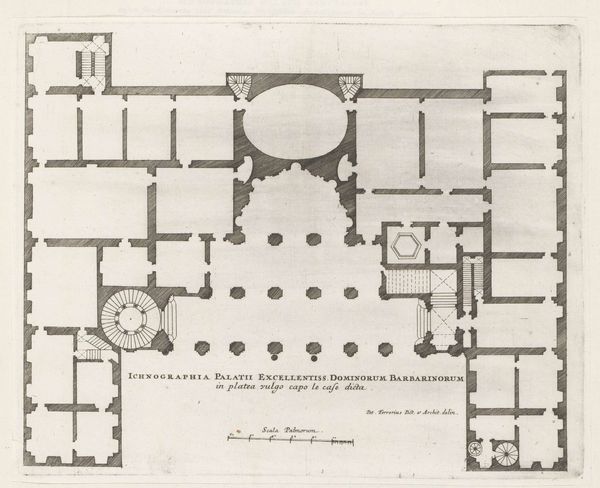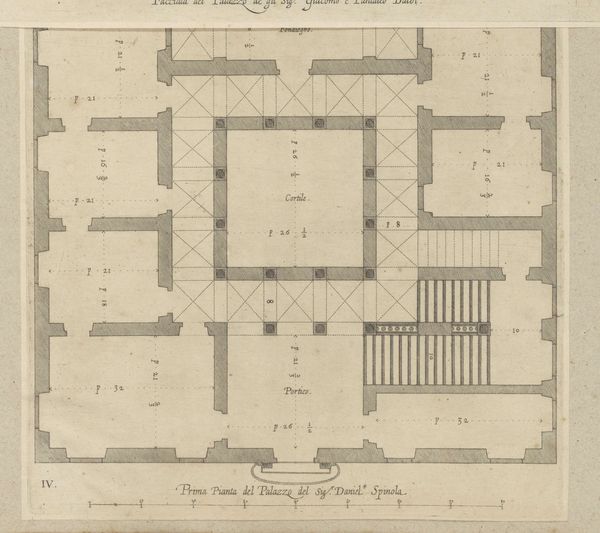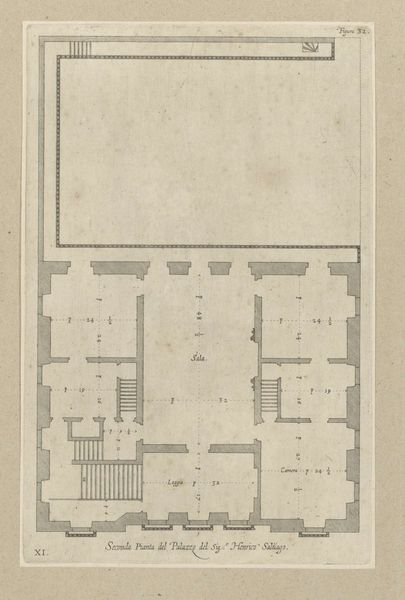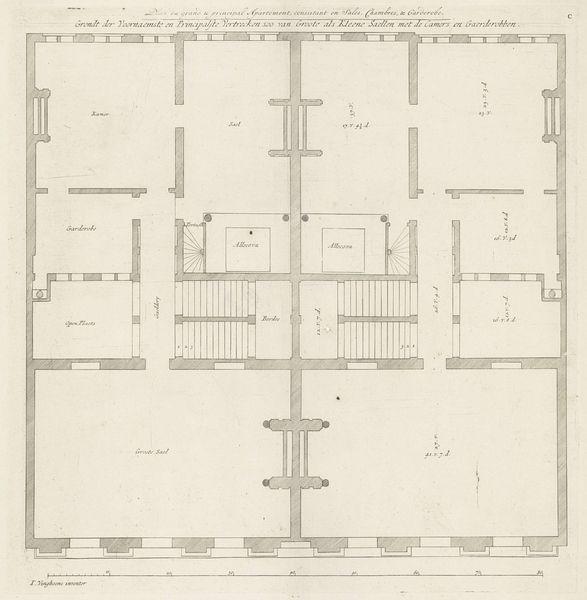
Plattegronden en façades van twee villa's ontworpen door Andrea Palladio 17th century
0:00
0:00
drawing, print, engraving, architecture
#
drawing
# print
#
landscape
#
geometric
#
italian-renaissance
#
engraving
#
architecture
Dimensions: height 310 mm, width 195 mm
Copyright: Rijks Museum: Open Domain
Editor: Right now, we’re looking at a 17th-century engraving titled "Plattegronden en fa\u00e7ades van twee villa's ontworpen door Andrea Palladio" which translates to "Floor plans and facades of two villas designed by Andrea Palladio." It looks like an architectural drawing, meticulous and symmetrical. I am so intrigued by its clarity, how it balances artistic expression with technical precision. What is your read on this engraving, from your expert point of view? Curator: Looking at this, I'm immediately transported back to the Renaissance's fascination with classical architecture and its attempt to use maths and proportion in aesthetics. Andrea Palladio wasn’t just drawing buildings, he was mapping a philosophy, attempting the ultimate in harmony by relating human structure to the proportions of a building. It makes me wonder: how did the intended residents feel about living inside something so... planned? Almost mathematically ordained? Editor: Planned living! It sounds a little bit like living inside of a clock. You feel that the cold precision robs the user from warmth? Curator: Precisely. The clinical depiction reduces it to a diagram, it sacrifices intimacy for a higher ideal, one removed from mundane daily life. Look at the empty facade - not a single person depicted using or even inhabiting this building! Does it serve a purpose beyond its visual pleasure? Perhaps it invites the resident to ascend beyond common pleasures toward more spiritual considerations? I guess I ask - is this a map to the ideal dwelling or a meditation? Editor: That’s a perspective shift, indeed! So it's not necessarily about living in a building but *contemplating* its design. I was only seeing the blueprint, and I should have noticed the intent to create an ideal, perfect form and what that really means to the observer. Curator: Exactly! Perhaps Palladio was not creating floor plans so much as composing a hymn for the Renaissance. And perhaps even to provoke discussion amongst people such as you and me. Editor: Food for thought. Thanks so much for your insights!
Comments
No comments
Be the first to comment and join the conversation on the ultimate creative platform.
